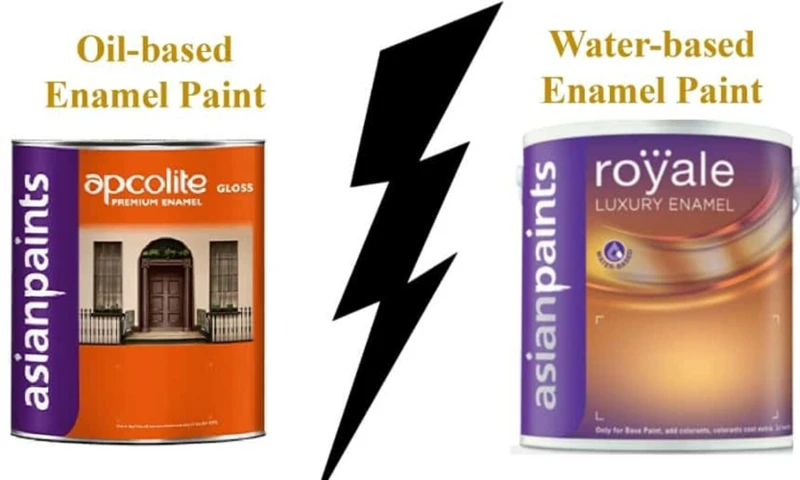Artists have long debated the merits of different mediums, each offering unique characteristics and outcomes. From the luminous layers of oil paint to the quick-drying properties of acrylics and the delicate transparency of watercolors, the choice of paint can significantly affect the creative process and final artwork. Understanding the differences between oil paint and other types of paint is essential for artists to make informed decisions and harness the full potential of their chosen medium.
Understanding Oil Paint
Traditional Oil Painting Techniques
Dating back centuries, traditional oil painting is revered for its versatility and rich texture. Artists apply oil paints in layers, a method known as ‘glazing,’ to achieve depth and luminosity. The slow drying properties of oil paint allow for meticulous blending and subtle gradations of color, hallmarks of traditional oil painting that are celebrated in the works of the Old Masters.
Oil Paint Drying Time
One of the most distinctive aspects of oil paint is its extended drying time. Unlike acrylics, which dry within minutes to hours, oil paints can take days or even weeks to fully cure. This lengthy oil paint drying time affords artists the flexibility to refine and rework their paintings over extended periods, an advantage that lends itself to a high level of detail and finish.
Water-Soluble Oil Paints
A modern innovation in the art world is water-soluble oil paints. These paints combine the handling properties of traditional oils with the convenience of water cleanup. This development has made oil painting more accessible, providing a practical alternative for artists who are sensitive to solvents or those working in shared or small spaces.
Comparing Different Paint Mediums
Oil Paint Vs Acrylic
When it comes to oil paint vs acrylic, several factors stand out. Acrylics dry rapidly, allowing for quick layering without the wait. However, this can be a drawback for artists who prefer a leisurely pace. Oil paint offers a longer working time, ideal for blending and achieving a range of tonal values that can be challenging with acrylics.
Oil Paint Vs Watercolor
The contrast between oil paint vs watercolor is stark in terms of opacity and texture. Watercolor’s inherent transparency is perfect for light, ethereal effects, while oil paint is prized for its thick, opaque application. Watercolor requires a delicate touch; oil, on the other hand, is more forgiving and can be manipulated over time.
Oil Vs Latex Paint
In the world of home decor, oil vs latex paint is a common comparison. Latex paints are water-based, dry quickly, and have less odor, making them a popular choice for DIY enthusiasts. Oil-based paints, although more durable and resistant to wear, require more preparation and have a longer curing time, making them less convenient for quick home improvement projects.
Advantages of Oil Painting
Oil Painting Benefits for Artists
The advantages of oil painting are numerous for those who take the time to master the medium. The richness and depth of color achievable with oils are unrivaled, allowing for incredibly nuanced artwork. Moreover, oil painting benefits include the ability to work wet into wet or build up layers over time, techniques that are difficult to replicate with other mediums.
Why Choose Traditional Oil Painting?
Choosing traditional oil painting means embracing a time-honored craft with a storied history. The slow drying nature of oils enables artists to develop their work thoughtfully, often resulting in a profound artistic expression that resonates with both the creator and the viewer. This enduring appeal is why many artists still prefer oil despite the availability of modern alternatives.
Practical Aspects of Using Oil Paint
Oil Paint for Artists: Versatility and Depth
Oil paint for artists stands out for its adaptability in a range of techniques, from impasto to glazing. The inherent depth that one can achieve with oil paints, thanks to their rich pigmentation and layering capability, allows for a vibrant and dynamic range in one’s art.
Oil Versus Acrylic Painting: Longevity and Finish
When considering oil versus acrylic painting, the longevity and finish of the artwork are key factors. Oil paintings, when properly cared for, can last for centuries without fading or cracking. Acrylics, while durable, do not have the same track record for longevity. Additionally, oil paintings have a distinctive luminous finish that is hard to replicate with other mediums.
When it comes to giving your home or a piece of furniture a fresh look, there are various painting techniques and paint types to consider. If you’re weighing the benefits of oil paint against other options, our articles could provide valuable insights. For those interested in the unique finishes that different paints offer, explore the distinctions in our article discussing the chalk paint vs milk paint. If you’re deciding on the best approach for your home’s exterior, you might want to read about the pros and cons in paint vs stain for home exteriors. And for the DIY enthusiasts contemplating the best application methods, our comparison of spray vs brush painting could help you make an informed decision. Each type and technique has its own set of advantages that could be perfect for your next project.
Conclusion: The Enduring Appeal of Oil Paint
The debate over mediums will continue as long as artists create. Still, the enduring appeal of oil paint lies in its unparalleled flexibility, depth, and the rich history it carries. For many artists, the advantages of oil painting — its tactile nature, the depth of color, and its adaptability — remain the defining factors in their choice of medium. Whether one is drawn to the traditional techniques of the Old Masters or the innovations of water-soluble oil paints, the world of oil painting offers a broad canvas for creative expression.


